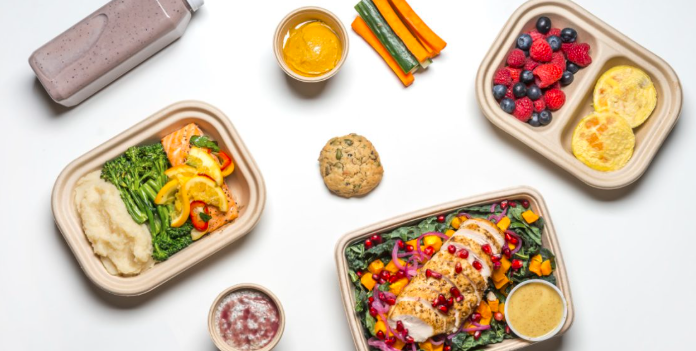Redefining Convenience: How meal delivery Is Reshaping Modern Dining

In an era defined by speed, efficiency, and digital transformation, meal delivery has emerged as one of the most significant shifts in modern dining behavior. From busy professionals seeking time-saving dinner solutions to health-conscious individuals pursuing tailored nutrition plans, meal delivery is no longer a luxury or convenience — it’s become a lifestyle.
Across urban centers and suburban neighborhoods alike, the demand for ready-to-eat, freshly cooked meals delivered straight to the doorstep is booming. This article explores the evolution of meal delivery, its impact on consumers and businesses, and why it’s shaping the future of the food and beverage industry.
From Takeout to Tailored Nutrition: The Evolution of meal delivery
Meal delivery was once synonymous with greasy fast food and limited options. Pizza, burgers, and fried chicken ruled the delivery game for decades. However, changing dietary preferences and digital platforms have dramatically transformed this landscape.
Whether it’s gluten-free meal kits, vegan dinners, keto lunches, or high-protein breakfasts, there’s a solution for every dietary requirement. Apps, websites, and AI-powered recommendation systems now make ordering as easy as a few taps on a smartphone.
This evolution didn’t happen overnight. It’s the result of key trends:
- Advancements in food tech
- Widespread mobile and app adoption
- Increased awareness of health and sustainability
- The post-pandemic shift to at-home convenience
The Rise of Subscription-Based meal delivery
A major player in the meal delivery boom is the subscription model. Unlike traditional takeaway orders, subscription services deliver pre-planned meals on a daily or weekly basis.
These services appeal to:
- Health-focused individuals who want calorie-controlled, macro-balanced meals
- Parents looking to simplify family dinners without sacrificing nutrition
- Busy professionals who don’t have time to cook or meal prep
- Elderly individuals seeking nutritious options without needing to shop or cook
Popular services include meal prep boxes (with ingredients and recipes), fully-cooked meals ready to heat, and hybrid options. This model also reduces food waste, encourages portion control, and supports goal-oriented eating habits.
meal delivery as a Wellness Solution
Many providers now work with dietitians, fitness coaches, and chefs to craft meals that support:
- Weight loss
- Muscle building
- Blood sugar control
- Digestive health
- Mental focus
With the inclusion of superfoods, low-glycemic ingredients, organic produce, and plant-based proteins, customers are no longer just buying food — they’re investing in their health.
Furthermore, tracking systems allow users to monitor nutritional intake, align meals with fitness apps, and even schedule cheat meals within their plan.
See also: Why Choose a 32oz Water Bottle with Handle
Environmental Impact and Sustainable meal delivery
One of the rising concerns in the food and beverage sector is the environmental footprint of packaging and food waste. In response, many meal delivery companies are adapting with sustainable practices:
- Compostable or reusable containers
- Minimal plastic usage
- Local and seasonal ingredient sourcing
- Eco-friendly delivery options such as bicycles or electric scooters
Meal delivery can actually reduce household food waste compared to traditional grocery shopping. With portion-controlled meals and just-in-time preparation, waste is minimized — benefiting both consumers and the planet.
Technological Innovation in meal delivery
Technology plays a crucial role in powering the modern meal delivery ecosystem. Innovations include:
- AI & Machine Learning: To recommend meals based on dietary preferences or past orders
- Cloud kitchens (ghost kitchens): Commercial cooking facilities without dine-in space that focus solely on delivery orders
These technologies not only streamline user experience but also optimize supply chain, reduce food costs, and help businesses scale efficiently.
The Business Side: Opportunity for Entrepreneurs
The rise of meal delivery presents a lucrative opportunity for food entrepreneurs, chefs, and health startups. Entry barriers are lower compared to opening a full-service restaurant. With a commercial kitchen, a skilled team, and a well-defined target market, startups can enter the market with:
- Niche offerings like paleo Indian meals or vegan sushi
- Corporate meal plans for office lunches
- Meal solutions for schools and hospitals
- Pet food delivery (a rapidly growing sub-category)
Additionally, data collection enables businesses to understand customer behavior, refine offerings, and implement loyalty programs that increase retention.
Challenges Facing the meal delivery Sector
1. Maintaining Food Quality During Transit
Ensuring that meals remain fresh, hot, and visually appealing is essential but often difficult in busy cities.
2. High Competition
With hundreds of players in the market, differentiation is key. Branding, menu diversity, and tech features all play a part.
3. Logistics and Delivery Costs
Navigating traffic, maintaining timely deliveries, and managing cost-effective routes remain a challenge.
4. Customer Retention
Subscription fatigue and rising customer expectations mean businesses must constantly innovate to keep users engaged.
Overcoming these hurdles will be key to long-term success and scalability.
Final Thoughts
meal delivery is more than a convenient service — it’s a cultural and culinary shift. In a world where time is precious, health is paramount, and environmental concerns are rising, the concept of meals arriving at your door, crafted with intention and nutrition, holds immense value.
As consumer behavior evolves, businesses in the food and beverage industry must stay agile. Investing in personalization, sustainability, and innovation will be key to succeeding in the ever-competitive meal delivery market.
Whether you’re a busy executive, a fitness enthusiast, a student, or simply someone who loves a delicious, nutritious meal without the hassle, the future of food is knocking — or rather, being delivered — right to your doorstep.





